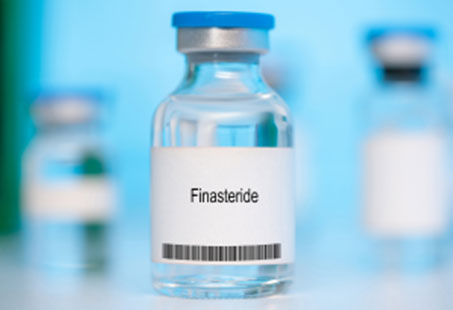Finasteride is a 5-alpha-reductase inhibitor that is commonly used in the treatment of benign prostatic hyperplasia (BPH) and male androgenetic alopecia.
Essentially, it works by stopping the conversion of testosterone into another hormone called dihydrotestosterone (DHT).
Despite being prescribed to millions worldwide for a variety of reasons, many people worry about the side effects associated with this drug.
From sexual dysfunction and infertility to cancer, depression and suicidal thoughts, it is important to be aware of the risks. In this guide, you’ll learn more about the uses and side effects of finasteride.
What Is Finasteride?
Finasteride is an antiandrogen agent that’s sold under the brand names Propecia and Proscar. Although its generic version is also available, which is significantly cheaper.
The idea for this drug came from a research conducted on male pseudohermaphroditism in 1974. It identified 5-alpha reductase – an enzyme which converts testosterone into the more potent dihydrotestosterone – deficiency as the culprit for an ambiguity in genitalia.
Among its many symptoms, there were two that caught the attention of researchers at the pharmaceutical company Merck: small prostate and no temporal recession of the hairline.
And so, in the 1980s, finasteride was developed, and in 1992, it was approved by the FDA for benign prostatic hyperplasia. Five years later, in 1997, it also got approved for male pattern baldness.
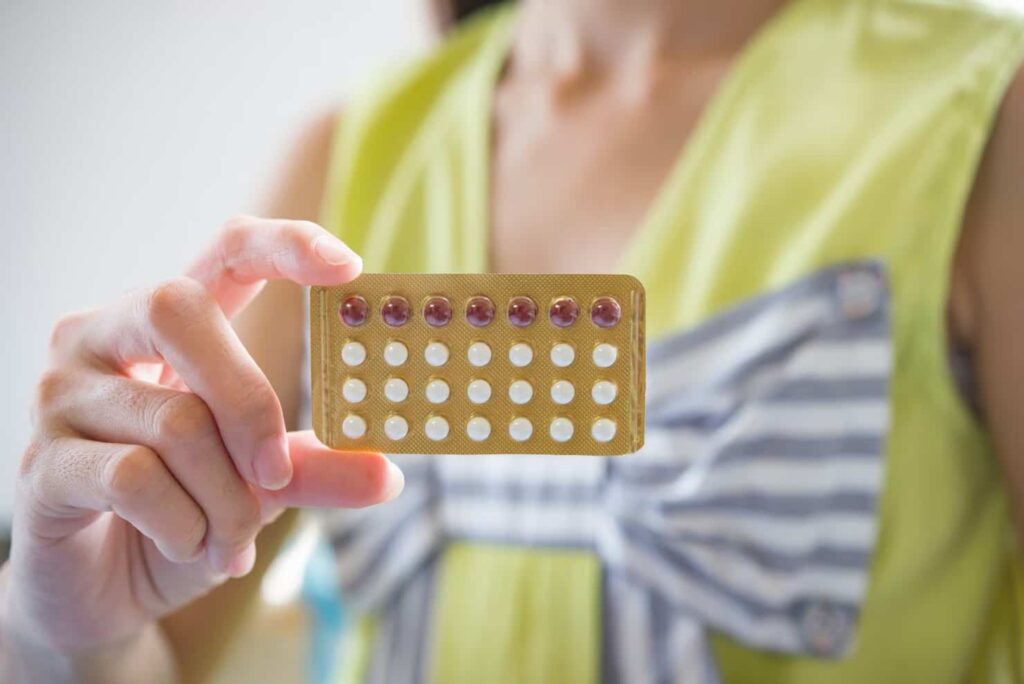
Mainly, men are prescribed this drug, but rarely women are given it off-label.
Many people wonder how to get finasteride in the UK. This drug is available on prescription only (you cannot buy it over-the-counter).
You can get it on the NHS for benign prostatic hyperplasia, but it’s not available for male pattern baldness. In the latter case, you’ll have to get it through a private prescription.
What Does Finasteride Do?
Finasteride decreases the levels of dihydrotestosterone to shrink the size of the prostate and slow down and prevent hair loss in men.
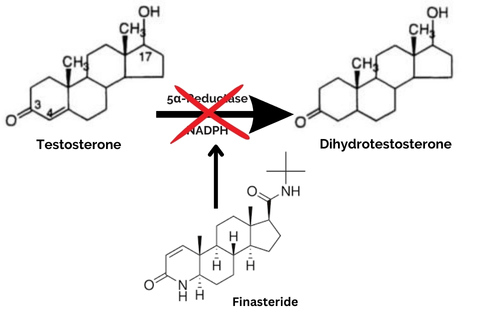
For the prostate, it’s prescribed at a dose of 5mg once a day and for hair loss, it’s 1mg once a day.
But according to StatPearls, once the drug is discontinued, your prostate will revert to its original size in 3 months. And any hair-related gains will also be undone in 12 months.
That’s because finasteride does not cure the underlying problem, it only helps in the management of its symptoms.
However, since the female body also produces androgens (albeit in smaller quantities), they can also experience an imbalance. So, according to one of the NHS Foundation Trusts, for women finasteride uses can include:
- Hirsutism
- Female pattern baldness
- Lichen planopilaris
- Frontal fibrosing alopecia
Their recommended dose is 2.5mg, but it can also go up to 5mg. Only your doctor can create an effective treatment plan for you.
What Is Finasteride Used For?
As mentioned above, in males, finasteride can be prescribed for reducing the size of the prostate to treat benign prostatic hyperplasia and/or improve hair loss caused by androgenetic alopecia.
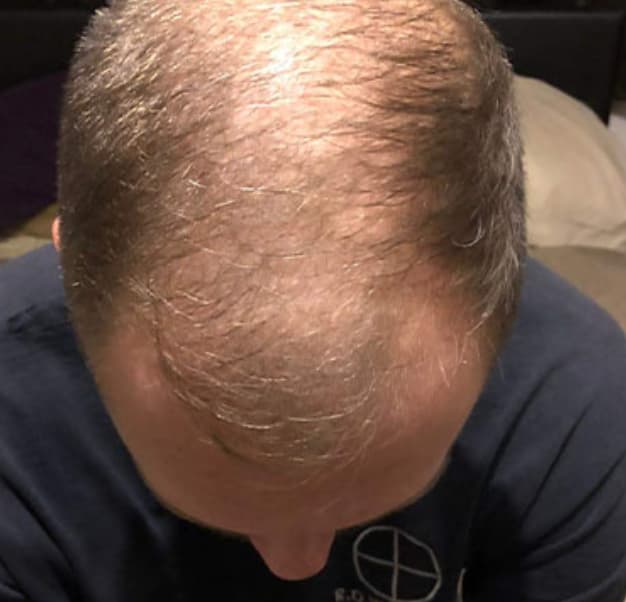
For BPH, it can take around 6 months for your symptoms to improve, but it’s possible that you’ll have to take this drug for a long time (years).
For androgenetic alopecia, on the other hand, initial results can take 3 to 6 months to show, and this, too, can be taken for a very long time.
A 10-year study published in Clinical Research and Trials evaluated the effectiveness of finasteride in 523 Japanese men with androgenetic alopecia. And it did show an improvement in the hair loss of those individuals.
Similarly, it may be used to help with different types of hair loss in women that result from an increase in DHT.
What Are The Side Effects Of Finasteride?
Finasteride side effects can include the following:
- Erectile dysfunction
- Decreased libido
- Reduced ejaculate volume
- Testicular pain
- Infertility
More serious side effects of finasteride can include:
- Enlarged breasts (gynecomastia)
- Skin rash
- Itchiness
- Hives
- Swollen face, arms, hands, lower legs, or feet
- Nipple discharge
- Lumps and pain in the chest
- Depression (and, rarely, suicidal thoughts)
Moreover, the UK government has warned that finasteride is associated with breast cancer risk. Male breast cancer has been reported with doses of 1mg and 5mg, even in clinical trials.
With this drug, you can also experience what’s known as “post-finasteride syndrome,” which is when the side effects of finasteride continue to persist even after the drug has been discontinued.
How To Reduce Side Effects Of Finasteride?
Some of the ways in which you can reduce the side effects of finasteride include:
- Lower the dosage of the drug (if possible and only after you’ve consulted your doctor).
- Consider using a topical form of finasteride.
- Talk to your doctor if you’re experiencing any side effects.
In general, it’s the sexual side effects that are commonly experienced. According to a review published in the Journal of Clinical and Aesthetic Dermatology, it’s been reported in 0.9% to 38% of cases.
Does Finasteride Regrow Hair?
Finasteride for hair loss has become especially popular since it can help with dihydrotestosterone-related alopecia.
According to a 2022 review published in the Journal of Dermatological Treatment, 1mg of finasteride per day can significantly increase the total number of hairs in the case of androgenetic alopecia.
However, it’s important to note that some researchers suggest that it’s better to start in the early stages of balding to see better finasteride hair growth. So, it might be best suited for those who aren’t too bald already.
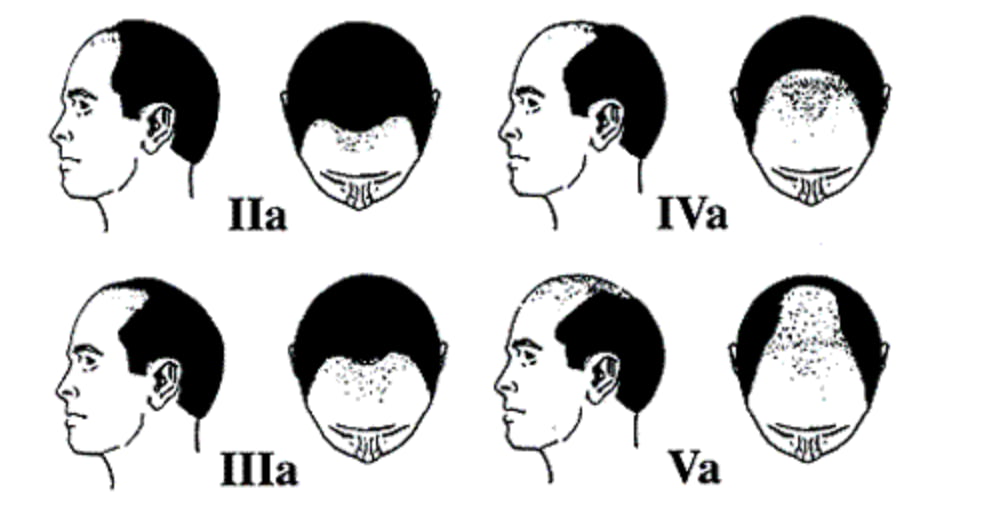
Medline also makes note of the fact that finasteride has not been shown to improve temple hair loss or even hair loss in children.
Moreover, as far as female pattern hair loss is concerned, the evidence is not so consistent.
For instance, an analysis of 9 studies was done in a research published in the Annals of Dermatology. And the drug had no effect on the overall hair density of female patients. In fact, a decrease was noted with finasteride.
And keep in mind whether it’s male or female androgenetic alopecia, there’s no guarantee that this drug will work for you. And finasteride hair regrowth also has its limitations. It’s unlikely to completely reverse your hair loss.
Some people don’t experience any change with it and there are others who choose to discontinue it because of the side effects.
When the latter happens, of course, any gains from the drugs are reversed after some time.
How Does Finasteride Work?
In simple terms, finasteride blocks the action of the 5-alpha-reductase enzymes. Now this enzyme has a Type 1 and Type 2 form.
Finasteride, in particular, only blocks the action of the Type 2 enzyme. There’s another drug called dutasteride which acts on both the forms of the enzyme to block the conversion of testosterone into dihydrotestosterone.
And once the DHT levels are reduced, it can help manage the symptoms resulting from its excess.
Can Women Take Finasteride?
For women, who are pregnant, likely to or may get pregnant, this drug is classified category X.
That’s because hormonal changes caused by this drug can lead to birth defects in male foetuses.
For this reason, it is even advised against touching crushed or broken tablets.
Moreover, it can also pass into semen and affect the unborn baby. Therefore, men who’re taking this drug are also advised to wear protection to avoid exposing the foetus to the drug.
Conclusion
While finasteride was developed for enlarged prostates, it has since become very popular as a treatment for hair loss. There are several studies that show this finasteride benefits potential in slowing down hair loss from pattern baldness.
However, this drug can also cause some side effects, and because of how significant they can be, many people feel wary of taking this drug altogether. Also, you have to keep taking it to maintain the finasteride results.
Still, it can be helpful if you’re looking for a non-surgical solution for your hair loss. But if it isn’t working out for you, you can also consider getting an affordable yet quality hair transplant in Turkey.
In any case, make sure to consult a board-certified medical professional to get a diagnosis for the underlying cause of your hair loss. They’ll prepare your treatment plan accordingly.
Reviewed and Approved by Trichologist Yaprak Yazan
FAQ
Is finasteride safe?
In general, finasteride is considered a safe drug, even for long-term use. However, it’s not without risks. In any case, you should follow your doctor’s prescription.
Do you need to take finasteride after hair transplant?
Since a hair transplant takes hair from the back of the scalp that is unaffected by dihydrotestosterone, there’s no need for you to take finasteride. However, some doctors might recommend it for preventative purposes.
How long does finasteride take to work?
For benign prostatic hyperplasia, it can take 6 months for you to notice an improvement in your symptoms and around 3-6 months for male pattern baldness.
Does finasteride cause shedding?
Finasteride can cause temporary shedding as the hair growth cycle adjusts to the changes induced by the drug.
Does finasteride lower testosterone?
Finasteride stops the conversion of testosterone to dihydrotestosterone, so it ends up increasing the levels of testosterone.
Does finasteride work?
Finasteride is a well-researched drug that’s also FDA-approved for benign prostatic hyperplasia and male pattern baldness. It works and is effective.
How long does finasteride stay in your system?
According to StatPearls, once finasteride is discontinued, it will take 14 days for your DHT levels to return to normal. However, its effects will take longer (in order of months) to reverse.
